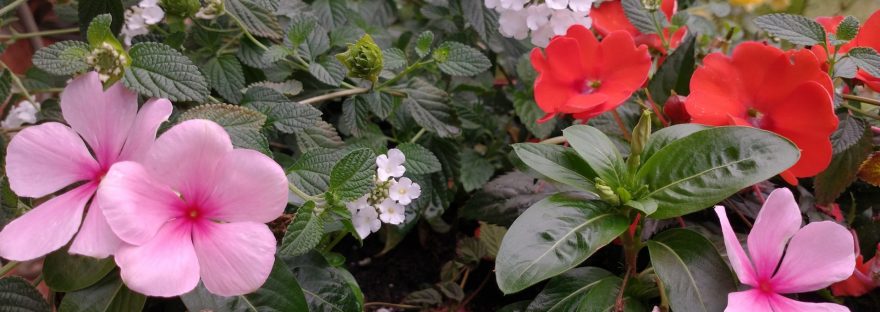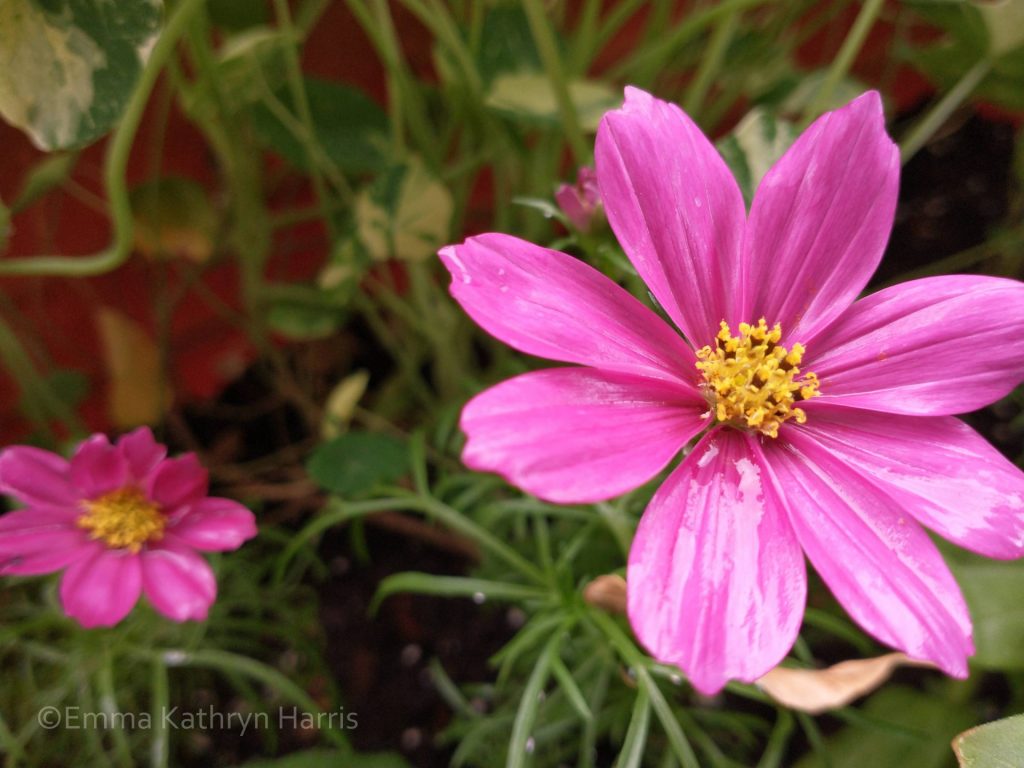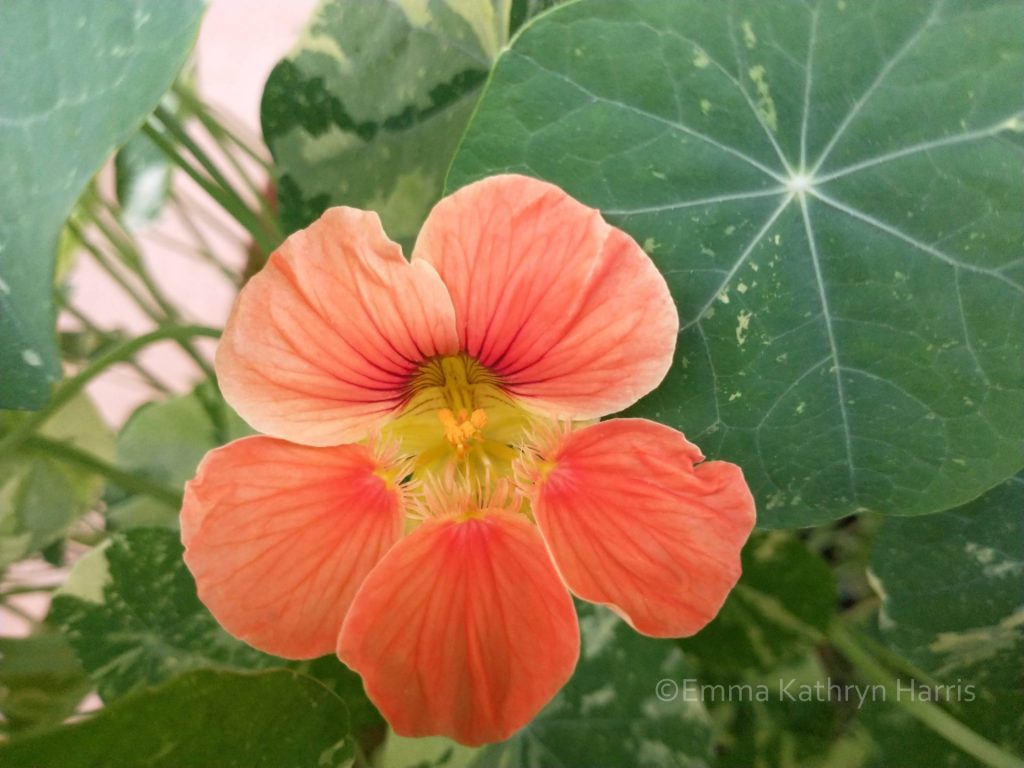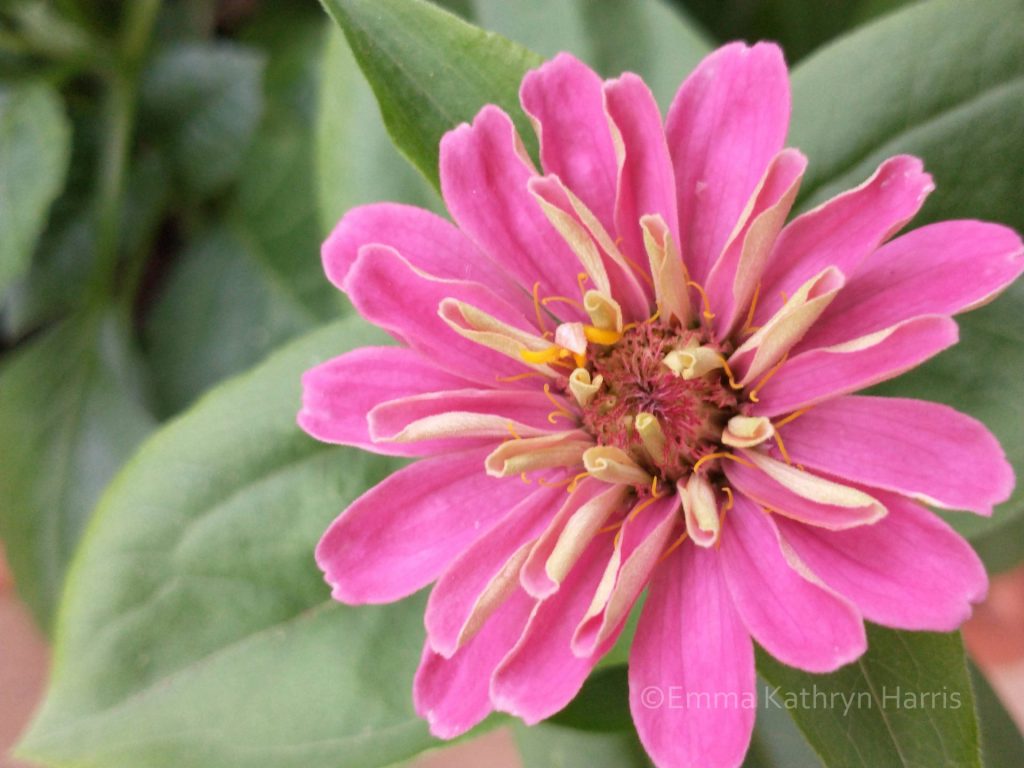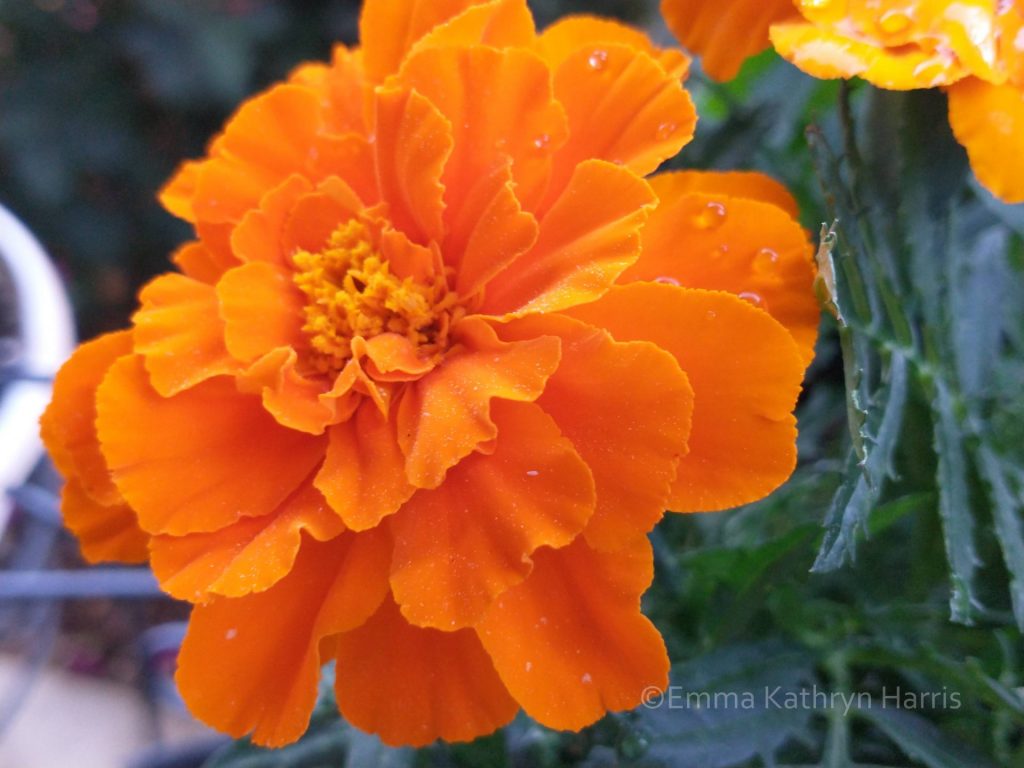“Plants want to grow; they are on your side as long as you are reasonably sensible.”
Anne Wareham, author
I admit it—I love container gardening. Why? Containers allow me to have a more controlled floral display and design, they fit into any small space, and the plants and flowers can be changed out when they die off. Containers put at the entrance of a home or driveway can be a welcoming hello to our guests and to us after a long day.
Much of my earlier “gardening” began with containers. Living in apartments in my earlier years, I didn’t have a full yard to garden to my heart’s content. Not to mention with full-time secular work, I never had time anyway.
I was often fortunate to have a bit of outdoor space as part of a porch, balcony or tiny backyard deck or patio space. To grow my beauties, I relied more on my imagination and decorative skills.
I didn’t fill each space with potted flowers. I usually had a balance with other objects, such as bird feeders or a bistro set. I also always had a small budget, so I couldn’t go crazy in the greenhouse, and I needed flowers that lasted.
Many today live in apartments and condos that don’t offer yard space. If you have a small porch or deck, balcony, or just a window for a window box, container gardening is the best way to bring the garden to you. With even one window box, those plants and flowers can bring you a mental joy you crave.
Pots are easy to move around and allow you options to change out as plants die, you replant new flowers, or the containers need to be in a different space when the sun changes direction.
If you’re planning on container gardening for the first time, or would like some tips to improve your skills and ideas, read on…
Tip 1: Understand your space
First, know your space where the flowers and plants will grow. Is it sunny or shady? Full sun, all day, will likely fry your plants. Even plants that require full sun need a little shade to give the soil a chance to cool and stay moist. Are you in a position where you can move the pots to a shady spot in the afternoon? Morning sun is less taxing on plants while afternoon sun is more harsh. If you can move the pots around and you don’t mind taking the time to do so, and the pots aren’t too heavy, this could help the sun/shade space challenge.
Another option, if you have the space, such as on a deck or patio, is to add a bistro set with an umbrella and the umbrella could provide some shade.
Check different times throughout the day and make notes as to what your space will experience with regard to sun and shade.
Second, understand the space for your pots with regard to amount of room. Will you have containers on a porch? Windowsill? Back patio? Courtyard? This will help you determine how many pots and flowers you will need.
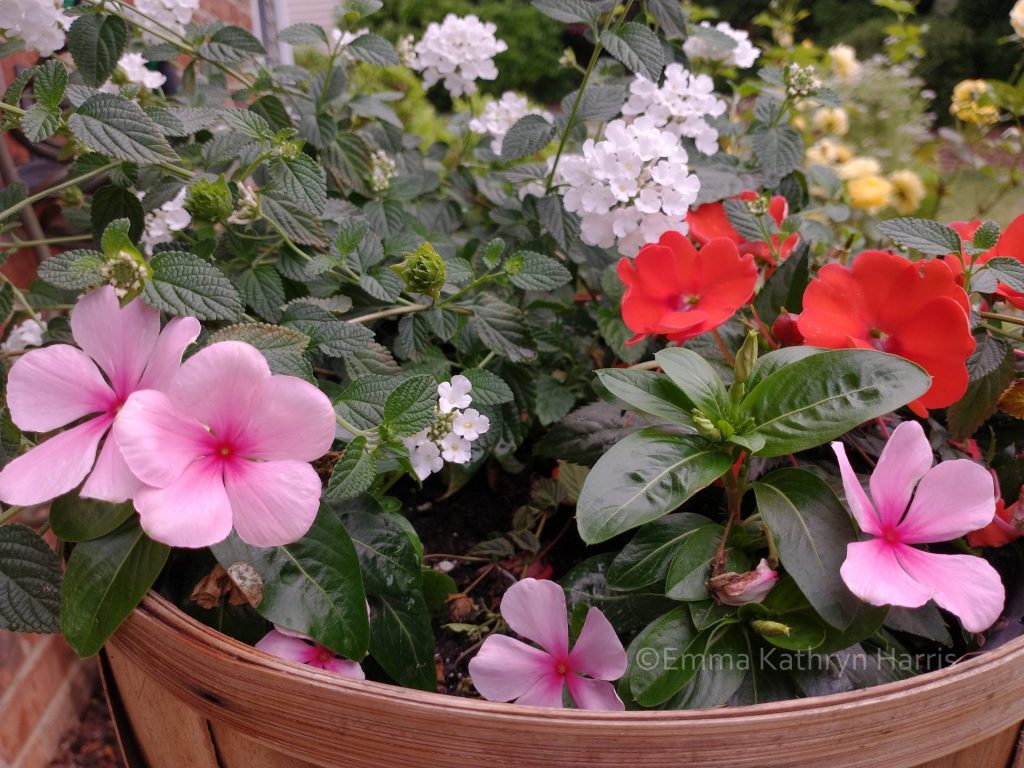
Sometimes our space seems larger to us until we get the containers. Containers are measured not just by height, but by width. Need ones with a 10-inch width? Twenty inches? Take a quick measure of your space to get an idea what you have for room. Even better, if you already have the containers, you could arrange them how you envision the pattern and go from there.
Larger containers work well in larger spaces (because it makes the containers look smaller and well, you also have the room!). But small spaces will require smaller pots, or you can mix it up with one large pot and smaller containers.
Tip 2: Choose your containers
When you choose containers, there are several things you’ll want to keep in mind.
First, as already mentioned, size is important. And not just for the space they’ll be in, but for the flowers or plants you are planting. You’ll need to check your plants and know what spacing they’ll need both for length and width for those roots. The plants might start small, but they grow tall and wide when they mature, and their roots might need a good spread rate to stretch their legs!
Second, choose containers with good drainage. I’ve learned the hard way when the soil doesn’t drain, the water rots the soil and the roots and then the plant dies. Check the containers for drainage holes. If they don’t have any, drill some holes. Or, you can always use a different, cheap plastic container with drainage (most of them have it) and put that container inside a prettier container, on top of a small layer of stones for drainage so it’s not sitting in water.
Soil can block the drainage holes too, so you could add a small layer of stones or a layer of newspaper to that container before you add the soil. You could also stick your finger or a pencil through the holes periodically to unblock the holes.
When you add the soil to your container, soak it well and stir it to make sure you get all the soil good and moist. This will also give you the chance to check drainage. If water doesn’t run through the holes, it’s not draining.
Third, container material is important. If you have clay, ceramic or other pots you love but might not work for whatever reason to fill with soil and the plants, as mentioned, you could leave the plants in the cheap container they come in and then put that container inside the pretty pot you want to use. Just make sure the original growing container will fit the plant as it matures.
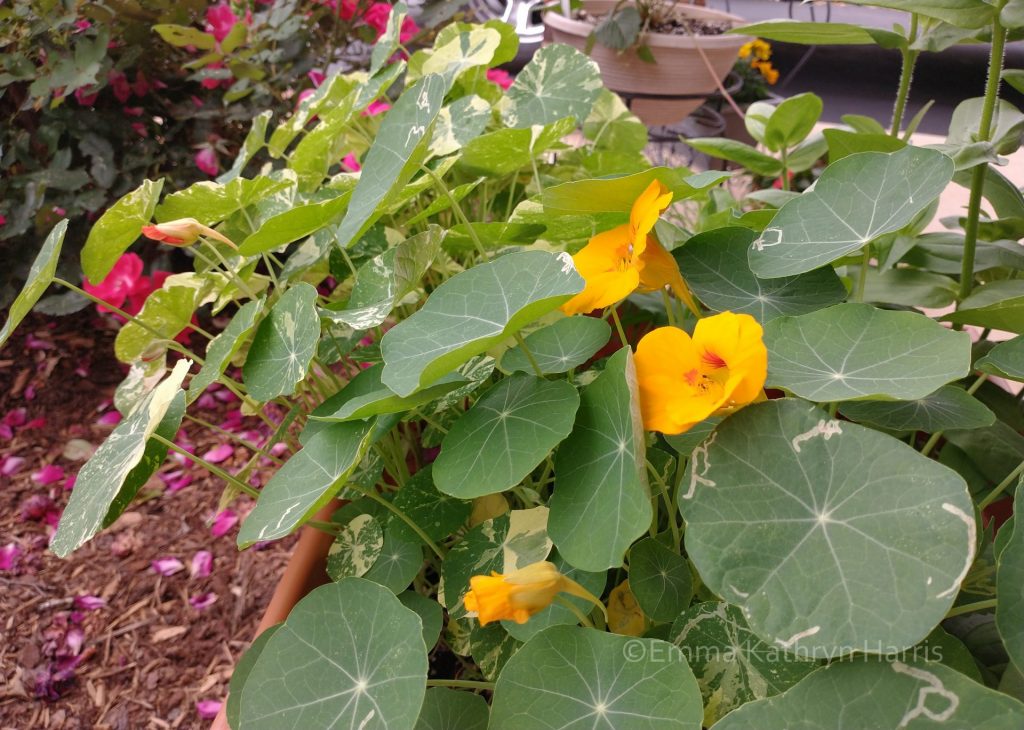
Certain containers will make your work harder, so you’ll want to avoid those. For example, metal or glass containers will absorb the sunshine and fry your plants. Terracotta (one of my favorites!) and clay pots also absorb the water and you’ll be watering your plants more often.
Nowadays, you can get some attractive looking, lightweight plastic containers that work great for container gardening. As much as I love ceramic pots, which do tend to keep the soil moist and cool, they become heavy to move. Unless I see a pot “I have to have,” I stick to plastic. I have two large terracotta-looking pots on my porch and they are made of plastic.
Tip 3: Choose your plants
If there are plants you want to buy (or grow from seeds), you have a lot of options for container gardening. Planning ahead will help you save time and money in the process of choosing your lovelies.
Your plants and containers work together as a team, so you can either choose your plants first and then decide the appropriate pots to use, or the other way around. Either way, these will work hand-in-hand.
You can start by choosing plants you like and will bring you joy. Then check their growth spread and height to know what containers will work best. Again, when you first plant these seedlings or small plants, three plants might seem small. But when they mature, spread and produce more, those three plants could turn into eight in a few weeks. So don’t at first despair with the extra space in your pot. Make sure those plants will fit after they mature.

Are they annuals or perennials or both? You can certainly mix them up. Check their bloom times (if they are flowers) and try to mix up spring, summer and fall blooms so your container remains attractive for as long as possible.
The most important item you’ll want to keep in mind is watering needs. Plants are not created equal. Some require moist soil, others want it a little drier at times. Plant your flowers together that require similar water and soil requirements. The maintenance and care will be easier.
Herbs are also great for container gardening, especially the herbs that tend to take over in the garden, such as dill, cilantro and mint. You can keep herbs in control and you know they are safe as they are getting the best soil and nutrients from you and remain chemical free.
If you love bulb and rhizome plants, such as tulips, irises and daffodils, they grow well in containers, which make it harder for pests, such as moles, mice and voles, the latter of which love to eat bulbs, to reach them.
Tip 4: Understand your soil
Soil choices are unending. You can decide whether you want regular soil or organic. With that said, I always use organic soil for edibles, such as herbs, strawberries, or anything else that will end up in my mouth. Edible flowers, such as nasturtiums, you might also consider planting in organic soil.
There is a difference in nutrients and water needs with the type of soil. Stick specifically to container soil for your containers. Much of the soil is designed so you can’t overwater your plants. Containers are compact, so the soil will be important here for maintenance.
And again, know the sizes of your containers so you know how much soil to buy. A bag of soil disappears fast, so to avoid multiple trips to the gardening center, do the math first.
Make this easy for yourself: buy bags of potting soil, and/or organic potting soil, and you don’t have to worry about creating your own peat moss and other things the experts recommend.
Tip 5: Understand your watering schedule
Your time schedule and your plants’ time need to mesh. Ideally you’ll want to water your plants in the morning before the sun and wind suck the soil dry. Giving them a good drink in the morning will help them get through the day.
But if your work schedule won’t allow you to do that, give them a good drink the night before.
I never recommend afternoon watering as the elements are more harsh and could really harm your plants as the water begs the sun to fry them. It’s similar to you sitting in the afternoon sun with a sprinkling of water tossed on you. How quickly would you dry up? Or burn?
Containers require more watering because they are smaller and can’t rely on the surrounding soil as they would in the garden. If you notice your plants wilting in the middle of the day because it’s especially humid or you’ve had a lot of wind, give your plants a good drink for sure.
In summer when the days are much warmer and more humid, your potted lovelies will require more watering. I’ve spent more time with my finger stuck in soil to check its moisture content throughout the day than I’d care to recount. If the soil in the morning is moist, you can add a bit more if you won’t be home until early evening. Smaller pots, window boxes and hanging plants dry out quickly, so these tend to get more watering than the larger containers.
Where the pots are placed (hot sun), the time of year, the weather conditions of the day, and your USDA zone will all determine how often your plants need a drink. Don’t wait until your plants are wilting or the soil has run dry before you water them.
And when you water them, try to get the water jug or hose under the leaves and aimed at the soil and the base and roots of the flowers. Leaves tend to act as an umbrella and won’t allow all the water to get through to the roots. Also, when watering, especially with a hose, have it on a light shower setting so you don’t blast the soil.
Tip 6: Minimal design is key
Most of us have heard that less is more. In the case of container gardening, this is an important reminder. Remember, if you have a small space, the more you fill it, the more crowded and claustrophobic it will become. It will look a haphazard eyesore with an overabundance of containers. You want to circulate oxygen, not suck it out of the air. You are trying to show depth of space, not close it all in.
You do not have to fill every space with plants.
If you or your visitors are forced to navigate around your potted plants, you have too many. You need an easy, safe path to your doorway, so don’t block it.
Not only that, but the more pots of plants you have, the more watering, care and maintenance you have to give them.
This can be tough when we love plants and think we can have a little bit of everything. Planning your arrangements is essential to avoid overcrowding and overspending.



Trailing flowers, such as lantana, are excellent compliments to containers. Geraniums are an ideal plant for containers and window boxes.
First, stick to odd numbers. In other words, one pot, three pots, as opposed to two pots, four pots. Or, if you add in another feature, such as a bird feeder, bistro set, small fountain or some other object, that could be your third to your two pots. Again, avoid overcrowding with objects as well.
With container gardening, you’re not necessarily going for the landscaped, manicured look, but you do want to keep things simple and neat.
Second, add dimensions. You could have a large, tall pot with a medium then small pot. Your flowers and plants will help with dimension. Plant plants that grow tall in the back of your arrangement, and the smaller ones in the front.
You can help along the dimensions by using plant stands at various sizes as well.
Third, create themes. This is where you can really use your imagination. For example, if you are growing herbs, you can keep those containers together. You could decide to stick with plants of the same color family in one corner, another color in another corner. In window boxes, you could create color “bookends”: one color on each end with a second color in the middle. You could decide on one color per container, or different colors of the same type of flower.
Another theme could be related to style, such as a cottage garden theme, or old-fashioned flowers theme.
And then there are your particular arrangements according to your taste.
The possibilities are only as endless as your imagination.
Final words
If you use terracotta, ceramic, clay or similar material pots that easily break and shatter, bring them inside for the winter. If you leave them out during the winter, they will crack and shatter, especially if the soil gets wet and turns to ice. Avoid using these pots for perennials that have to remain outside during the winter months.
If you plant perennials, check the care for the winter months. Again, if they have to stay out all year, plant them in pots that can handle cold weather. On bitter cold nights, you might consider bringing them inside.
When planting bulbs, typically you will bring those pots inside for the winter. However, the plants will still need care. While they won’t need as much watering, you want to make sure the soil doesn’t get completely dry. Check the instructions for winter care. Some bulbs are best stored outside of the pots.
And finally, when planning your container gardening, consider your time schedule, be reasonable about what you can maintain, and how much energy you have. Try to plan out your budget, schedule and garden plan so your emotions and desire to have gorgeous plants don’t outweigh your reality.

